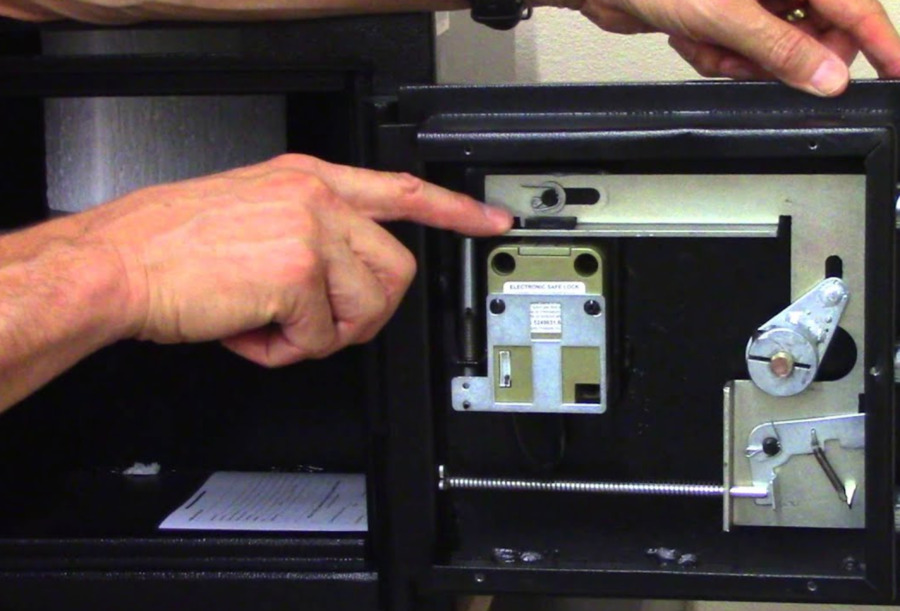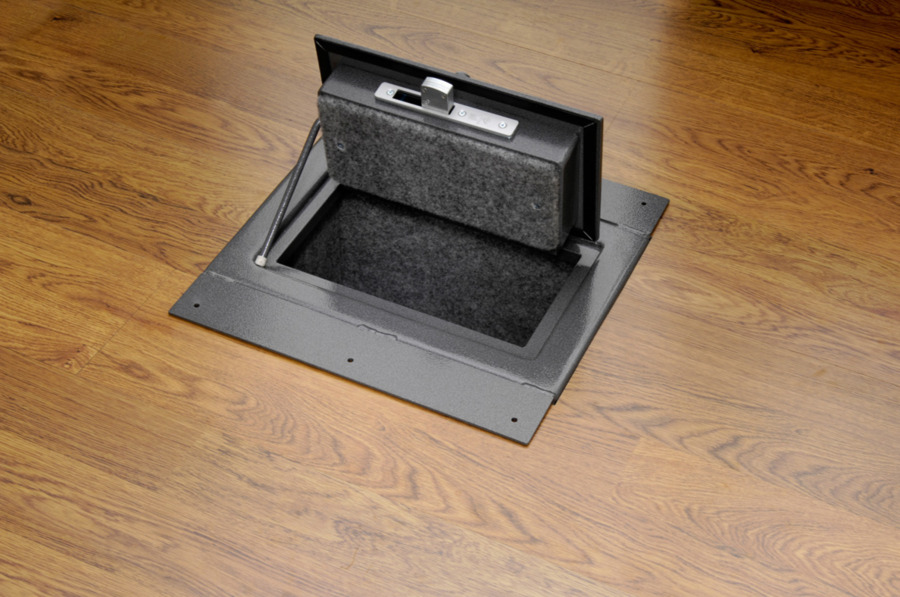The dial knob (divided ring) and code disks are located on the same rotational axis. The first disk is the driving one; it is firmly fixed to the axis with a metal rod of a semicircular cross-section (cotter pin). The next 2-3 disks rotate from the first. Only neighboring disks interact with each other: the master with the second, the second with the third, the third with the fourth. The discs contact through the protrusions, at this moment a metallic click is clearly audible. Each disk has a groove. All four grooves line up with a correctly selected cipher so that a single narrow recess is formed. When turning the handle or key, the bolt fits freely into the common groove.
Pros and Cons Of A Mechanical Combination Lock For Safes
A mechanical lock for a safe is a universal device. But it has its drawbacks:
- Time spent on opening and recoding
- Not all locks can change the code several times
- not suitable for people with poor vision
- The advantages include availability, wear resistance, reliability, reasonable cost, and ease of operation. The owner does not need to carry the key or leave it in a safe place. You can always change the replacement code if you suspect it has been tampered with
- Safes with mechanical locks are installed at home when there is no urgent need to open it daily. The average service life is 150 years

Types of Safes
All safes are divided into two types – floor-standing (standing on their own) and built-in (built into a wall, cabinet, or drawer). Floor-standing safes are, for example, gun safes. Built-in safes are, for example, luxury watch safes.
Choosing between a floor-standing safe and a built-in safe depends on a variety of factors including the intended purpose, space availability, level of security desired, and aesthetic considerations.
When to Choose a Floor-Standing Safe
- Heavy-Duty Security Needs: Floor-standing safes often come in larger sizes and can be made from thicker, more robust materials. They are ideal for businesses or individuals who need to secure a significant amount of valuables or sensitive documents. Their weight and size can make them more resistant to theft.
- Flexibility in Placement: If you need the flexibility to move the safe in the future or you’re in a temporary location, a floor-standing safe can be a better choice. Although they are heavy, they aren’t permanently fixed to the structure of a building, allowing for relocation if needed.
- High-Capacity Storage: For those requiring more storage space, floor-standing safes typically offer larger internal capacities. This is suitable for storing larger items or a greater volume of valuables.
- Visibility as a Deterrent: Sometimes, the mere presence of a robust safe can deter potential thieves. A conspicuous floor-standing safe can serve as a clear signal that valuables are protected.

When to Choose a Built-In Safe
- Space Constraints: In smaller homes or offices where floor space is at a premium, a built-in safe can be an excellent way to secure valuables without occupying valuable real estate. They can be seamlessly integrated into walls, cabinets, or drawers.
- Stealth and Concealment: Built-in safes offer an added layer of security through concealment. Safes that are integrated into walls or hidden behind objects are less likely to be targeted by intruders simply because they’re not in plain sight.
- Architectural Integration: For aesthetic reasons or to comply with interior design, a built-in safe can be made to blend with the surroundings, maintaining the visual integrity of the space. This is particularly important in luxury homes or where design aesthetics are a priority.
- Permanent Installation: If you’re settled in a long-term residence or commercial space and you want to ensure that the safe becomes an integral part of the property, a built-in safe is ideal. Their installation can sometimes add value to a property due to the added security feature.

Football fan, father of 3, fender owner, vintage furniture lover and New School grad. Making at the crossroads of art and function to create strong, lasting and remarkable design. Let’s make every day A RAZZLE-DAZZLE MUSICAL.
